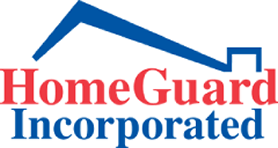Just The Facts

by David Hamerslough
The listing and sale of real estate typically requires real estate licensees to describe the condition of the property or respond to questions regarding that condition. Examples include preparing remarks in the MLS, marketing material, the agent’s Visual Inspection Disclosure form (“AVID”), or responding to questions from clients which are often prompted by statements in inspection reports or disclosures. The words and statements that a licensee uses, whether they are factual, whether those words and statements are qualified, and what advice and recommendations are made to their own client or to others, are some of the factors that impact whether the licensee may have liability to one or more parties in a transactional dispute. This article explores this issue in the context of an AVID that was a focal point of a lawsuit I was recently involved in.
That transaction involved an older home that had numerous visible cracks in both the interior sheetrock and exterior stucco. The AVID identified the existence of cracks but the agent described these cracks as being “normal cracks associated with the age of the home” (approximately 60 years). The licensee also stated that the number of cracks, their location, and their direction (horizontal vs. vertical vs. diagonal) were “not significant” and were attributable in some locations to normal separations of the joints between the sheetrock panels and were not something that required further investigation on the part of the buyer.
Escrow closed and the buyer cosmetically renovated the home, but the cracks quickly reappeared; in many instances, the cracks became longer and wider, and the gaps between where walls met became more offset. Ultimately, the buyer retained a geotechnical engineer and learned that the cracks were the result of a 60-year-old home being built with shallow footings on expansive soil. The fluctuations in the length, width, and offset of the cracks, and their direction, were due to expansion and contraction of the expansive soil as a result of seasonal rainfall. The cost to remedy this situation turned out to be significant and resulted in a claim being made by the buyer against their agent.
What the agent did wrong in this case was that he failed to follow the recommendations in standard real estate industry forms and do the actual job of a real estate licensee, which is to only state what “red flags” existed (cracks); instead, he editorialized about the cause and/or the significance of those red flags. By minimizing, understating, and/or de-emphasizing the visible condition of the structure as “normal” or “minor” or characterizing it as a condition that did not require any further investigation, the licensee hampered the buyer’s evaluation of the property. In so doing, the agent assumed liability for what a qualified expert might have determined had the buyer received the proper advice.
What the licensee should have done is describe the cracks factually without any comment or characterization regarding their cause, effect, significance, repair, and/or remediation. The licensee should have encouraged the buyer to investigate the cracks by retaining appropriate professionals. Finally, the licensee did not qualify the delivery of any of these statements or opinions by advising the buyer that the licensee was not an expert, was not qualified to offer an opinion on the significance or lack thereof of the cracks and did not know one way or the other what their significance might be.
What happened in this transaction is not uncommon. Every time a licensee uses an adjective (e.g., normal, minor, hairline, etc.) to describe or modify a condition (e.g., a crack or cracks, as in this transaction), they are potentially expressing an opinion and taking on potential liability. This can also happen when a licensee’s marketing statements attribute a “possible” condition or benefit that the property might have – for example, where the MLS or marketing materials state that the square footage of the home could be expanded, existing rooms could be used for other purposes, or an ADU could be built on the lot. If the buyer is in any way thwarted or unable to make those advertised possibilities become a reality, then the real estate licensee faces liability for misrepresentation and, possibly, even fraud.
Agent liability may or may not exist depending upon additional facts and circumstances in the transaction, including the information contained in other disclosures, inspection reports, and advisories, as well as the knowledge, training, skill, and experience of the other parties. Nevertheless, the potential risk of agent liability can be avoided or minimized if agents recognize that it is in everyone’s best interests if they just stick to the facts.
About David Hammerslough
In his 40 years of practice, Dave Hamerslough has litigated and arbitrated residential and commercial real estate disputes on behalf of brokers and agents, buyers and sellers, and landlords and tenants. He teaches courses and writes articles on these subjects for brokers, agents, attorneys, and consumers. Dave also acts as mediator and arbitrator of real estate disputes. He is admitted to practice in all California courts.
About HomeGuard Home Inspection, Roof Inspection, Termite Inspection, & Natural Hazard Disclosure Reports
HomeGuard Incorporated with a focus on the real estate transaction process, performs over 60,000 termite, property and roof inspections each year. It is with this extensive knowledge and years of professional experience that we can guarantee a better understanding of your inspection needs. The best proof of our customers’ satisfaction is the fact that so many of them stay with us and refer us to their families, friends and associates.



